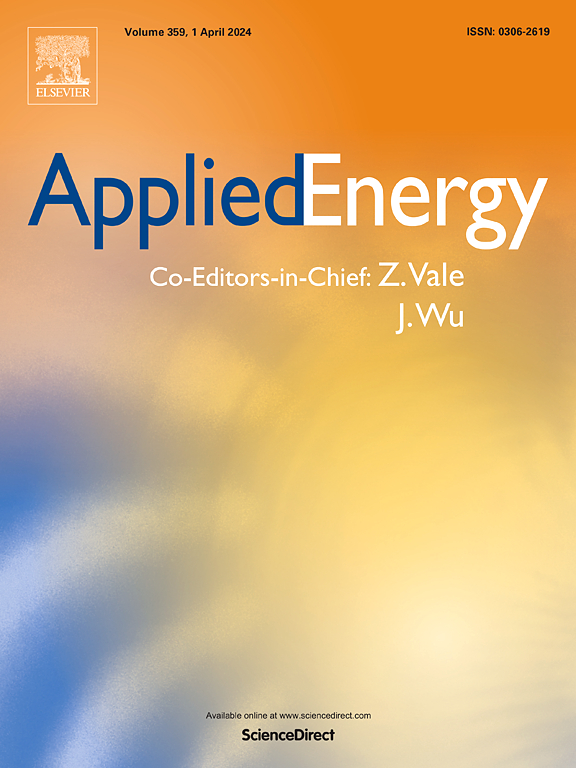Battery electric long-haul trucking with overnight charging in the United States: A comprehensive costing and emissions analysis
IF 10.1
1区 工程技术
Q1 ENERGY & FUELS
引用次数: 0
Abstract
This work presents a costing and emissions analysis of long-haul battery electric trucks (BETs) with overnight charging for the U.S. market. The energy requirements of a long-haul truck for a 600-mile (966 km) real-world driving range determine battery sizes. The battery masses are used along with a fleet-replacement model and the U.S. payload distribution to compute payload losses for two different chemistries, Nickel-Manganese-Cobalt (NMC) and Lithium-Iron-Phosphate (LFP). With present battery energy densities, BET fleets require 6% (NMC) or 27% (LFP) more trucks to move the same cargo as today’s diesel fleet. The cost of electricity delivered using high-power overnight chargers is analyzed. Our baseline scenario estimates 0.32 USD/kWh, and it only decreases to 0.15 USD/kWh for the optimistic scenario. Currently, we compute the total cost of ownership for BETs to be more than twice (2x) that of diesel trucks, however, the price premium is projected to decrease significantly to 1.2x in the long term. BETs could become economically competitive with diesel if the delivered cost of electricity drops below 0.1 USD/kWh, and if we realize projected improvements in battery energy density and cost. Our emissions analysis shows negligible greenhouse gas (GHG) benefits from switching to BETs today, primarily due to the carbon intensity of electricity generation. In the long term, we project BETs to have 40% less GHG emissions than diesel. Today, BETs are not well-suited for the long-haul trucking sector. However, short-haul trucking could potentially benefit from electrification, and battery-swapping could significantly benefit long-haul BET, hence we encourage further investigation. Our analysis framework is provided as a Google Colab Notebook that can be modified to assist these needed future studies.

求助全文
约1分钟内获得全文
求助全文
来源期刊

Applied Energy
工程技术-工程:化工
CiteScore
21.20
自引率
10.70%
发文量
1830
审稿时长
41 days
期刊介绍:
Applied Energy serves as a platform for sharing innovations, research, development, and demonstrations in energy conversion, conservation, and sustainable energy systems. The journal covers topics such as optimal energy resource use, environmental pollutant mitigation, and energy process analysis. It welcomes original papers, review articles, technical notes, and letters to the editor. Authors are encouraged to submit manuscripts that bridge the gap between research, development, and implementation. The journal addresses a wide spectrum of topics, including fossil and renewable energy technologies, energy economics, and environmental impacts. Applied Energy also explores modeling and forecasting, conservation strategies, and the social and economic implications of energy policies, including climate change mitigation. It is complemented by the open-access journal Advances in Applied Energy.
 求助内容:
求助内容: 应助结果提醒方式:
应助结果提醒方式:


